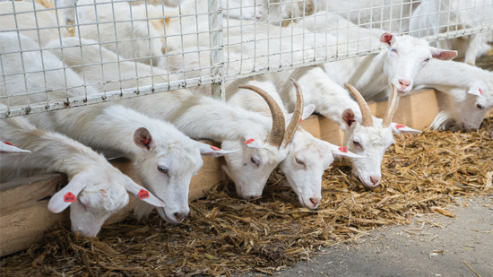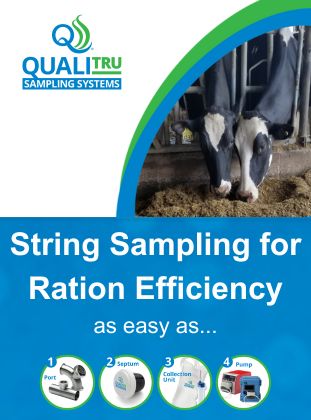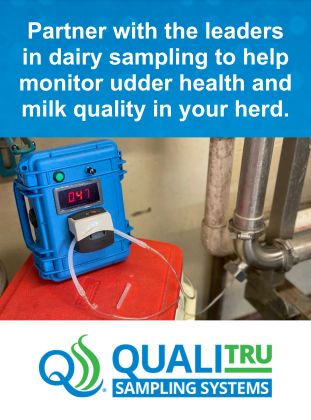Navigating Milk Composition & Quality in Dairy Goats

By Dr. Gail Carpenter, State Dairy Extension Specialist, Iowa State University.
Dairy goat producers understand the delicate balance required to maintain optimal milk quality in their herds. Achieving the right fat and protein content levels is essential for product quality and reflects the goats’ overall health and performance.
As producers aspire to produce high-quality milk, understanding and managing somatic cell count (SCC) and mastitis becomes paramount. Milk composition is intricately tied to various precursors: glucose, amino acids, fatty acids, and minerals. For ruminants like dairy goats, acetate and butyrate also play vital roles in shaping milk characteristics. Milk fat, a key component in dairy products, originates from dietary fatty acids and de novo synthesis. This term refers to the process by which the mammary gland produces fatty acids on its own through precursors. Acetate and butyrate are produced by the digestion of feeds in the rumen, providing the building blocks for de novo synthesis. High de novo production of fatty acids is strongly linked with higher milk fat levels. Therefore, a strong link exists between high milk fat production levels and good rumen health. Importantly, good rumen health is also closely related to milk protein production.
Forages are pivotal contributors to the dairy goat diet, serving multiple purposes. Beyond essential energy, forages supply necessary proteins and promote rumen fill, contributing to overall rumen health. This symbiotic relationship between forages and the rumen’s microbial community becomes crucial in optimizing the production of microbial crude protein in the rumen. As microbes break down dietary forage, a balance of nitrogen and energy sources becomes imperative for their growth, directly influencing milk protein levels. In addition to components, udder health is critical to producing quality milk.
SCC is a critical metric in evaluating milk quality. Unlike cows, goats typically exhibit higher SCC levels, although this does not necessarily correlate with infection. As a result of the mechanism by which goats produce milk, they shed more of their cells into milk, which lab tests interpret as SCC. However, it is still possible for goat producers to use SCC as an indicator of subclinical (no visible symptoms) mastitis, a common concern in goat herds, even those who do not experience high levels of clinical (visible symptoms) mastitis. Achieving levels below one million is achievable and is often incentivized by creameries. Monitoring SCC involves various methods, from bulk tank assessments providing herd-level information to monthly DHI tests and laboratory examinations such as the California Mastitis Test (CMT).
CMT is an effective, economical screening tool for individual goats. This cheap and easy test can easily identify goats with SCC > one million. Incorporating CMT into your routine enables early detection and targeted management of udder health. Ensuring high milk quality goes beyond SCC monitoring; it involves meticulous attention to various aspects of goat management and milking practices. Maintaining a clean and dry environment in the pen, employing best practices in the parlor (including clean udders and hands/gloves), and implementing calm and stress-free doe handling all contribute to superior milk quality.
In conclusion, maintaining high-quality milk in dairy goat operations involves many aspects of nutrition and management. By integrating these management practices, dairy goat producers can consistently produce high-quality milk from a healthy herd.



